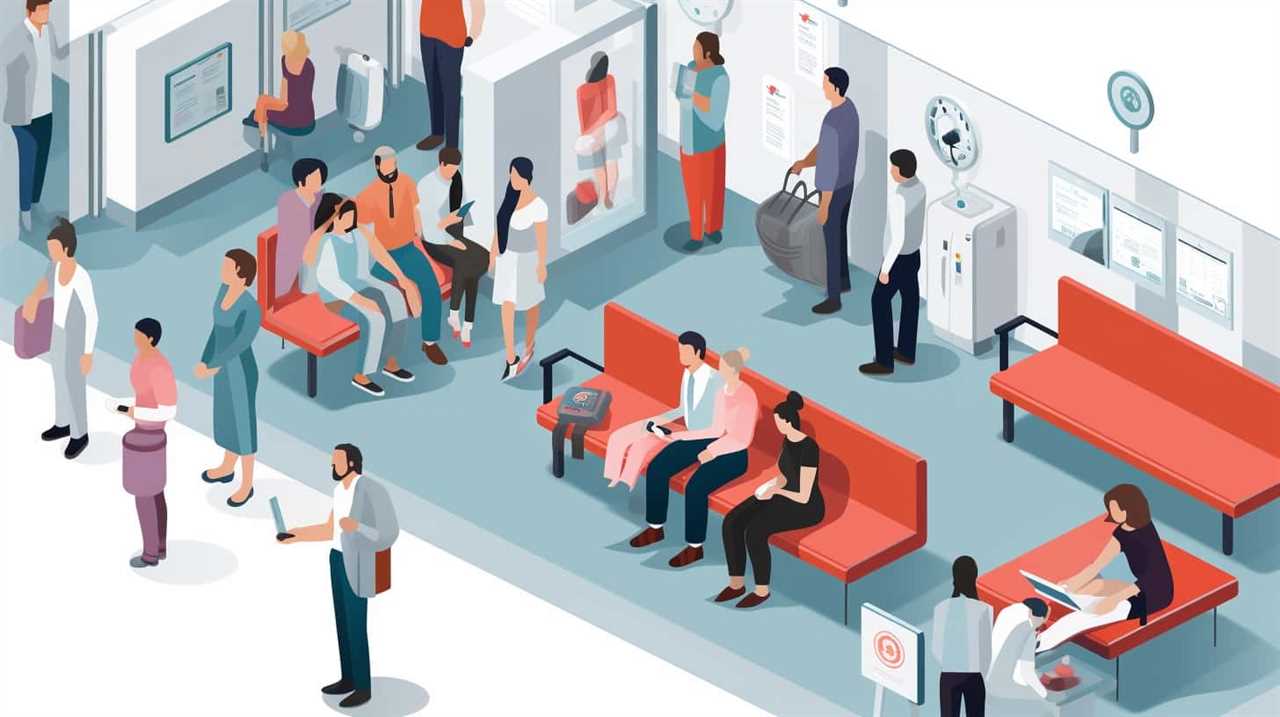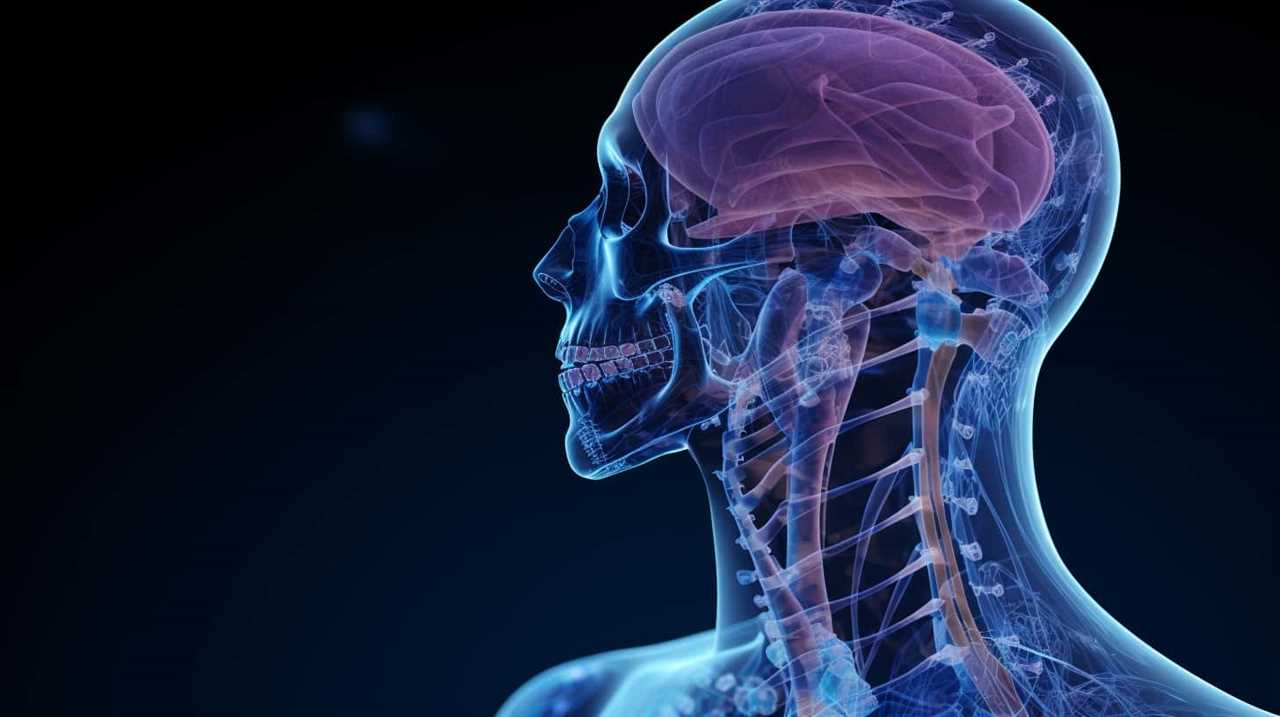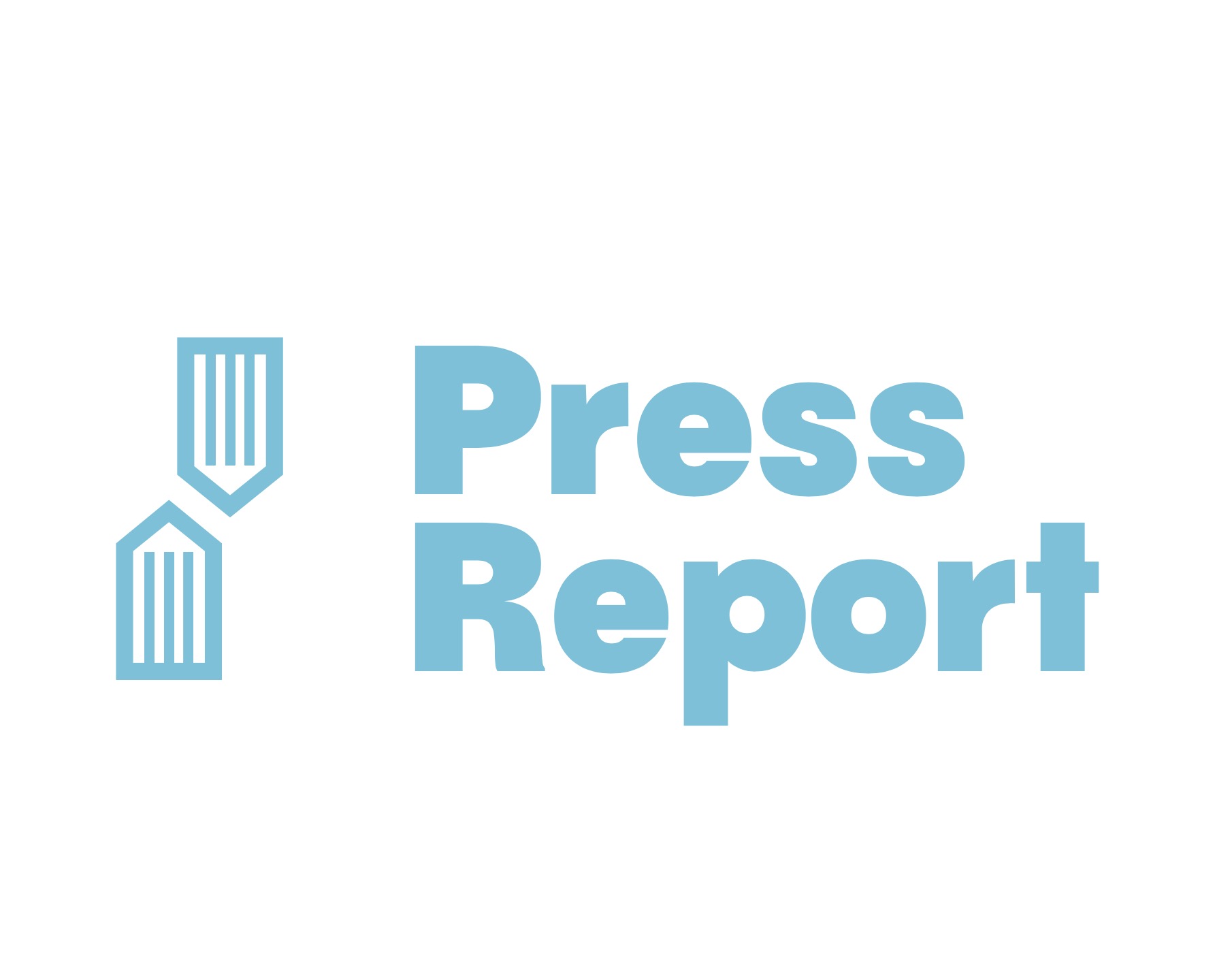AI in Medicine
Breaking Barriers: The Future of Medical Imaging AI Revealed

Do you feel prepared to see the exceptional capabilities of AI in medical imaging?
Brace yourselves, as we embark on a journey to reveal the future of this groundbreaking technology.
Advanced imaging techniques, enhanced diagnostic capabilities, precision and accuracy in diagnosis, personalized treatment planning, and streamlined workflow and efficiency – these are just a glimpse of what awaits us.
Join us as we break barriers and explore how medical imaging AI will revolutionize the field of healthcare.
Key Takeaways
- Real-time imaging and advanced techniques enhance diagnostic accuracy and patient outcomes.
- AI-powered medical imaging reduces the risk of misinterpretation and human errors, leading to improved patient outcomes and timely interventions.
- AI algorithms enable personalized treatment planning by assessing the risk of disease progression and treatment response.
- Medical imaging AI revolutionizes healthcare workflows through automation, increasing efficiency in diagnosing and triaging patients and freeing up healthcare professionals to focus on critical tasks.

Advanced Imaging Techniques
We are revolutionizing medical imaging with advanced techniques that enhance diagnostic accuracy and improve patient outcomes.
One of the key advancements in this field is real-time imaging. Real-time imaging allows healthcare professionals to capture and analyze images in the moment, providing immediate and crucial information for accurate diagnosis and treatment planning. This technique eliminates the need for time-consuming image processing, streamlining the workflow and reducing patient waiting times.
Moreover, real-time imaging enables image-guided interventions, where medical procedures are performed with the assistance of real-time imaging guidance. This ensures precise targeting of the affected area, minimizing the risks and improving the overall success rate of interventions.

Enhanced Diagnostic Capabilities
With the integration of real-time imaging and image-guided interventions, our medical imaging advancements are now enhancing diagnostic capabilities through improved accuracy and immediate access to crucial information.
Automated interpretation and real-time analysis are revolutionizing the field of medical imaging, allowing for more efficient and accurate diagnoses. Through the use of artificial intelligence algorithms, medical images can be automatically analyzed and interpreted, reducing the reliance on human interpretation and potentially reducing errors.
Real-time analysis further enhances diagnostic capabilities by providing immediate feedback and allowing for prompt decision-making. This real-time analysis can be particularly beneficial in emergency situations where time is of the essence.

Precision and Accuracy in Diagnosis
To further enhance diagnostic capabilities, medical imaging AI is poised to revolutionize precision and accuracy in diagnosis by consistently providing real-time analysis and immediate feedback. By leveraging advanced algorithms and machine learning techniques, AI systems can analyze medical images with great accuracy, detecting even the most subtle abnormalities that a human eye might miss.
This enhanced precision translates into improved patient outcomes, as conditions can be identified at earlier stages, leading to timely interventions and treatments. Additionally, AI-powered diagnosis reduces the risk of misinterpretation and human errors, ensuring consistent and reliable results.
By streamlining the diagnostic process, medical imaging AI also contributes to reducing healthcare costs, as it minimizes the need for unnecessary tests and procedures.

Personalized Treatment Planning
The integration of medical imaging AI allows us to leverage advanced algorithms and machine learning techniques for personalized treatment planning. This groundbreaking technology revolutionizes the way we approach patient care, ensuring treatment optimization and patient-centric care.
Here are four key aspects of personalized treatment planning:
- Accurate diagnosis: By analyzing medical images with AI algorithms, we can precisely identify and characterize abnormalities, providing a solid foundation for personalized treatment plans.
- Risk assessment: AI-powered tools can assess the risk of disease progression and treatment response, enabling healthcare professionals to tailor treatment strategies based on individual patient needs.
- Treatment selection: Medical imaging AI can assist in selecting the most appropriate treatment options by considering the patient’s unique characteristics and the potential benefits and risks associated with each option.
- Monitoring and adaptive therapy: AI algorithms can continuously analyze medical images during treatment to monitor the response and make real-time adjustments to therapy, ensuring optimal outcomes for patients.
With personalized treatment planning, we’re entering a new era of healthcare that prioritizes individual needs and maximizes treatment effectiveness.

Streamlined Workflow and Efficiency
How can medical imaging AI contribute to a streamlined workflow and increased efficiency in healthcare?
By leveraging automation benefits and time-saving technology, medical imaging AI has the potential to revolutionize healthcare workflows. With the ability to analyze and interpret medical images with speed and precision, AI algorithms can assist radiologists in diagnosing and triaging patients more efficiently.
Through automation, routine tasks such as image processing, data extraction, and report generation can be expedited, freeing up valuable time for healthcare professionals to focus on more complex cases. This not only reduces the burden on radiologists but also improves patient care by reducing waiting times and enabling faster treatment decisions.

Frequently Asked Questions
What Are Some Examples of Advanced Imaging Techniques Used in Medical Imaging Ai?
Examples of advanced imaging techniques used in medical imaging AI include magnetic resonance imaging (MRI), computed tomography (CT), positron emission tomography (PET), and ultrasound. These techniques provide detailed and accurate images for diagnosis and treatment planning.
How Does Enhanced Diagnostic Capabilities in Medical Imaging AI Improve Patient Outcomes?
Enhanced diagnostic capabilities in medical imaging AI improve patient outcomes by providing more accurate and timely diagnoses. This leads to earlier detection and treatment of diseases, reducing morbidity and mortality rates. Additionally, it increases healthcare efficiency by streamlining the diagnostic process.
What Is the Role of Precision and Accuracy in Diagnosis When It Comes to Medical Imaging Ai?
In medical imaging AI, precision and accuracy play a crucial role in diagnosis. They ensure reliable and consistent results, leading to improved patient outcomes. The future of medical imaging AI relies on advancements in these areas.
How Does Personalized Treatment Planning Contribute to Better Patient Care in Medical Imaging Ai?
Personalized treatment planning in medical imaging AI allows us to tailor patient care, leading to improved outcomes. By analyzing individual characteristics and medical history, we can optimize treatment strategies and ensure the best possible care for each patient.
Can You Explain the Ways in Which Streamlined Workflow and Efficiency Are Achieved in Medical Imaging Ai?
In medical imaging AI, we achieve streamlined workflow and efficiency through various methods. By automating tasks such as image analysis and report generation, we reduce manual effort and improve overall productivity, leading to faster and more accurate diagnoses.

Conclusion
In conclusion, the future of medical imaging AI is set to revolutionize the field of healthcare.
With advanced imaging techniques, enhanced diagnostic capabilities, and precision in diagnosis, the potential for personalized treatment planning is vast.
Moreover, the streamlined workflow and efficiency brought about by AI will further elevate the quality of patient care.
Brace yourselves for a groundbreaking era in medicine, where the boundaries of what’s possible will be shattered like glass.
AI in Medicine
Busting Myths About Sleep and Productivity

Studies in sleep science have proven many common misconceptions about sleep and productivity to be false. In a world filled with misinformation, it is crucial to distinguish between truth and falsehood to grasp the effects of sleep on our daily performance and health.
Key Takeaways:
- Sleep deprivation has negative effects on decision-making, memory, focus, and creativity.
- Sleep quality and continuity are equally important as sleep duration.
- Getting out of bed when unable to sleep can help improve sleep patterns.
- Alcohol before bed disrupts sleep quality and should be avoided.
- A cooler bedroom temperature promotes better sleep quality.
Myth: Your body gets used to lack of sleep.
Contrary to popular belief, research has shown that the body does not adapt to a lack of sleep. Sleep deprivation has significant negative effects on both the short-term and long-term health of our bodies. It not only hinders decision-making, memory, focus, and creativity, but it also increases the risk of various health problems.
Sleep deprivation can lead to metabolic disorders, cardiovascular issues, a weakened immune system, and even mental health problems. It is clear that sleep is fundamental for our overall well-being and should never be taken lightly. Simply put, our bodies do not adjust or function optimally without adequate sleep.
Furthermore, it is essential to note that sleep duration is not the only factor to consider. While getting the recommended amount of sleep is important, the quality of sleep and uninterrupted sleep also play a crucial role in our health and productivity. Sleep continuity ensures that we experience the necessary restorative stages of sleep, which are vital for our physical and mental rejuvenation.
Sleep deprivation takes a toll on our bodies and minds, affecting various aspects of our functioning. To optimize our well-being, we must prioritize both the quantity and quality of our sleep.
To summarize, the idea that our bodies can adjust to a lack of sleep is nothing more than a myth. Sleep deprivation has numerous negative effects on our overall health, impacting not only our cognitive abilities but also our physical well-being. Prioritizing sleep duration, quality, and continuity is crucial for promoting optimal health and productivity.
| Short-term Effects | Long-term Effects |
|---|---|
| – Impaired decision-making | – Metabolic disorders |
| – Memory problems | – Cardiovascular issues |
| – Lack of focus | – Weakened immune system |
| – Decreased creativity | – Mental health problems |
Myth: How long you sleep is all that matters
When it comes to sleep, many people believe that the duration of their slumber is the sole determinant of its quality. However, this is a common misconception. While sleep duration certainly plays a role, it is not the only factor that matters for a restful and rejuvenating sleep experience. In fact, the significance of sleep quality and continuity should not be overlooked.
Sleep quality refers to the overall effectiveness of the sleep cycle and the depth of rest achieved during each stage. Even if you manage to sleep for a long period of time, if the quality of your sleep is poor, you may still wake up feeling tired and groggy.
Sleep continuity refers to the degree to which your sleep is uninterrupted throughout the night. Fragmented sleep with frequent awakenings can disrupt the natural flow of sleep stages, preventing you from reaching the deep, restorative phases of sleep that are crucial for physical and mental rejuvenation.
Research has shown that sleep interruptions and poor sleep continuity can have a significant impact on various aspects of our well-being. These include our cognitive function, emotional stability, immune system health, and even our ability to perform daily tasks efficiently.
To illustrate the importance of sleep quality and continuity, consider a scenario where you sleep for a solid eight hours but experience numerous awakenings throughout the night. Despite the seemingly adequate duration of sleep, the interruptions prevent you from achieving the deep, rejuvenating sleep your body needs. As a result, you may wake up feeling fatigued, lacking focus, and unable to perform at your best.
So, while it’s important to aim for an optimal amount of sleep each night, it is equally crucial to prioritize the actual quality and continuity of your sleep. This involves creating a sleep-friendly environment, establishing a consistent bedtime routine, and addressing any underlying sleep disturbances or conditions that may be interfering with your rest. By prioritizing both the quantity and quality of sleep, you can maximize the restorative benefits of a good night’s rest.
What the experts say:
“We now know that sleep quality and continuity are just as important as sleep duration when it comes to reaping the benefits of a good night’s rest. Even if you manage to sleep for the recommended number of hours, frequent interruptions can disrupt the restorative stages of sleep and leave you feeling tired and unfocused.” – Dr. Sleep Expert
The importance of sleep quality and continuity
| Benefits of Sleep Quality | Benefits of Sleep Continuity |
|---|---|
|
|
By recognizing the significance of sleep quality and continuity, you can prioritize the factors that truly contribute to a restful and rejuvenating sleep experience. Remember, a good night’s sleep is not just about how long you sleep, but also how effectively and seamlessly you traverse the stages of sleep.
Myth: If you are having trouble falling asleep, stay in bed until you can.
When it comes to trouble falling asleep, many of us believe that staying in bed and waiting for sleep to come is the best approach. However, this myth can actually worsen our sleep patterns and leave us feeling restless.
Instead, it’s important to break the association of bed with restlessness. When you find yourself unable to sleep, it’s better to get up and engage in a relaxing activity in a dimly lit setting. For example, you can try reading a book or practicing deep breathing exercises. By doing this, you create a positive association between your bed and sleep, allowing your mind and body to relax and prepare for restful sleep.
Benefits of Getting Out of Bed:
- Reduced restlessness: Getting out of bed helps to prevent restlessness from building up, allowing you to feel more relaxed when you return to bed.
- Positive sleep association: Engaging in a relaxing activity outside of bed helps to create a positive association between your bed and sleep.
- Improved sleep quality: Breaking the cycle of lying in bed when unable to sleep can help improve your sleep quality over time.
By implementing the practice of getting out of bed when you’re unable to sleep, you can break the cycle of restlessness and set the stage for a more restful night’s sleep. It’s important to remember that everyone’s sleep patterns are unique, so it may take some trial and error to find the best approach for you.
| Myth | Truth |
|---|---|
| If you are having trouble falling asleep, stay in bed until you can. | Get out of bed and engage in a relaxing activity until you feel drowsy. |
| Staying in bed perpetuates restlessness and can worsen sleep patterns. | Getting out of bed breaks the association of bed with restlessness and helps create a positive sleep connection. |
| Engaging in a relaxing activity outside of bed promotes relaxation and improves sleep quality. |
Myth: Alcohol before bed improves sleep.
Many people believe that having a drink or two before bed can help them sleep better. However, the truth is quite the opposite. While alcohol may initially induce drowsiness, it actually disrupts the quality of sleep, leading to negative effects on our overall restfulness and well-being.
When we consume alcohol, it interferes with our sleep cycles, causing more frequent awakenings throughout the night. This disrupts the natural progression of deep and REM sleep, which are essential for restoring our bodies and minds.
Not only does alcohol disrupt sleep cycles, but it can worsen existing sleep disorders, such as snoring and sleep apnea. It relaxes the muscles in the throat and can increase the intensity of snoring, leading to more interrupted sleep. For individuals with sleep apnea, alcohol can further obstruct the airways, exacerbating the condition.
To illustrate the negative effects of alcohol on sleep, here is a table highlighting the various ways it impacts our rest:
| Negative Effects of Alcohol on Sleep |
|---|
| Increased awakenings throughout the night |
| Worsened snoring and sleep apnea |
| Disruption of sleep cycles |
As the table shows, alcohol has a significant impact on the quality of our sleep. To improve the quality of your sleep, it’s important to reduce or eliminate alcohol consumption before bed. Instead, opt for a calming nighttime routine that promotes relaxation and healthy sleep habits.
“Alcohol disrupts the quality of sleep, leading to more frequent awakenings throughout the night.”
Remember, a good night’s sleep is crucial for our overall health and well-being. By avoiding alcohol before bed, you can ensure that you’re giving your body the best chance to achieve restful and rejuvenating sleep.

A Warm Bedroom Temperature: Myth or Reality?
When it comes to creating the perfect sleep environment, many believe that a warm bedroom temperature is the key to a restful night’s sleep. However, recent studies challenge this common misconception, revealing the benefits of a cooler sleeping environment. Contrary to popular belief, maintaining a temperature of around mid-60s Fahrenheit in the bedroom can actually promote better sleep quality and improve overall well-being.
It’s true that a warm and cozy bedroom can seem inviting, especially during colder months. But, our bodies naturally cool down during sleep, and a hot room can disrupt this cooling process, leading to unwanted awakenings and disturbed sleep patterns. Keeping the bedroom temperature in the cooler range encourages the body’s natural cooling mechanisms and promotes more restorative sleep.
In addition to preventing sleep disruptions, a cooler bedroom temperature offers other significant benefits. Research has shown that a cooler sleep environment can enhance the production of melatonin, the hormone responsible for regulating sleep-wake cycles, promoting faster sleep onset and a more synchronized sleep pattern overall.
Moreover, a cool sleep environment has been found to have a positive effect on reducing the risk of nightmares, night sweats, and respiratory problems associated with hot and stuffy rooms. It can also benefit individuals who suffer from certain sleep disorders, such as insomnia and sleep apnea.
So, what is the optimal bedroom temperature for sleep? The consensus among sleep experts is to maintain a temperature in the range of 60-67 degrees Fahrenheit (15-19 degrees Celsius) for an optimal sleep environment. However, personal preferences may vary. Experimenting with different temperature settings can help identify the ideal sleep temperature that works best for you.
The Drawbacks of a Warm Bedroom
While a warm bedroom may initially provide a sense of comfort, it’s important to consider the potential drawbacks. Here are a few reasons why a warm sleep environment may not be the best choice:
- Disrupted sleep continuity: High temperatures can result in increased wakefulness, leading to a fragmented sleep experience.
- Excessive sweating: A hot sleep environment can cause excessive sweating, making it uncomfortable and disrupting sleep.
- Increased risk of dehydration: Warm temperatures can contribute to dehydration during the night, which can negatively impact sleep quality.
- Difficulty regulating body temperature: A warm sleep environment can hinder the body’s natural ability to regulate its temperature, leading to discomfort and sleep disturbances.
- Worsening of existing sleep disorders: Individuals with sleep disorders such as insomnia or sleep apnea may experience exacerbated symptoms in a warm bedroom.
“Maintaining a cooler temperature promotes better sleep quality.”
By prioritizing a cooler bedroom temperature, you can create an optimal sleep environment that promotes better sleep quality and overall well-being. Embracing a cooler sleep environment can enhance your sleep experience and help you wake up feeling refreshed and rejuvenated.
Myth: Sleeping with a Light On is Harmless
Sleeping with a light on may seem harmless, but it can actually have negative effects on our sleep quality and overall well-being. Even when our eyes are closed, exposure to low levels of light during sleep can impact our circadian rhythm and increase the risk of awakenings.
Research suggests that sleeping with too much light in the bedroom can interfere with the production of melatonin, a hormone that promotes sleep. When melatonin levels are disrupted, it becomes harder to fall asleep and maintain a deep, restorative sleep.

Additionally, sleeping with a light on can lead to eye strain and potentially contribute to weight gain. Exposure to light during sleep hours can disrupt the body’s natural sleep-wake cycle, making it difficult to achieve optimal sleep and potentially affecting our metabolism.
To ensure higher-quality sleep and maintain a stable circadian rhythm, it is best to sleep in a dark room. Consider using blackout curtains, shades, or blinds to minimize external light sources. If complete darkness is not achievable, using an eye mask can also help block out unwanted light and promote better sleep.
Creating a sleep environment that prioritizes darkness can enhance your sleep quality and ensure you wake up feeling refreshed and well-rested.
Myth: You eat spiders in your sleep
The widely spread myth of eating spiders in sleep has no evidence to support it. Spiders are unlikely to willingly crawl into a person’s mouth, and the chances of swallowing one during sleep are extremely low. The myth may have originated from the desire to shock or fear of spiders, which affects a significant percentage of the population.
While many people find the thought of spiders crawling into their mouths while they sleep unsettling, it is important to remember that it is simply a myth with no scientific basis. Spiders tend to avoid humans and prefer their natural habitats. The chances of a spider willingly entering a person’s mouth are slim to none.
Additionally, the human body has natural reflexes and protective mechanisms that would make it highly unlikely for a spider to be swallowed while sleeping. The idea that people unknowingly consume spiders in their sleep is simply unfounded and lacks any concrete evidence.
It is worth noting that the myth of eating spiders in sleep has been perpetuated over the years, resulting in widespread belief. However, it is important to rely on scientific evidence and critical thinking when evaluating such claims.
So, rest assured that you can sleep soundly without the fear of accidentally ingesting any eight-legged creatures.
Myth: Women and men have equal risk of insomnia.
Contrary to popular belief, gender differences play a significant role in the occurrence of insomnia. Research has consistently shown that women are more likely to experience sleep disturbances and difficulties compared to men. Various factors contribute to this disparity, exposing women to a higher risk of insomnia. Let’s explore some of the key reasons behind this gender difference.
- Hormone fluctuations: Women experience hormonal changes throughout their reproductive years, particularly during menstruation, pregnancy, and menopause. These fluctuations can disrupt the natural sleep-wake cycle and contribute to sleep difficulties.
- Mood disorders: Conditions such as depression and anxiety are more prevalent in women and are known to negatively impact sleep. These disorders can lead to insomnia and make it challenging to maintain healthy sleep patterns.
- Excessive stress levels: Women often face unique stressors in their personal and professional lives, which can significantly affect sleep. Chronic stress can lead to increased difficulties falling asleep, staying asleep, and obtaining quality rest.
- Sleep disorders: Certain sleep disorders like sleep apnea and restless legs syndrome may be more common in women and can contribute to sleep disruptions and insomnia.
Pregnancy, a transformative period in a woman’s life, is often accompanied by sleep disturbances. Approximately half of pregnant individuals report experiencing poor sleep regularly. Hormonal changes, physical discomfort, frequent urination, and the anticipation of motherhood can all contribute to sleep difficulties during this time.
It is important to note that women may also be at a higher risk of underdiagnosis for sleep-disrupting conditions, such as sleep apnea. Symptoms of sleep apnea in women may differ from those commonly observed in men, leading to potential misdiagnosis or underrecognition of the condition.
In conclusion, gender differences significantly impact the risk of insomnia, with women being more susceptible to sleep disturbances. Understanding these factors can help healthcare professionals and individuals develop targeted interventions and strategies for better sleep health and overall well-being.
| Factors contributing to gender differences in insomnia | Impact on sleep |
|---|---|
| Hormone fluctuations | Disrupt the natural sleep-wake cycle |
| Mood disorders | Lead to difficulties falling asleep and maintaining healthy sleep patterns |
| Excessive stress levels | Result in increased sleep difficulties |
| Sleep disorders | Contribute to sleep disruptions and insomnia |
| Pregnancy | Commonly accompanied by sleep disturbances |

Myth: Napping makes up for a lack of nighttime sleep.
While a quick nap can provide an energy boost during the day, it cannot fully compensate for inadequate nighttime sleep. Napping might seem like a tempting solution to combat sleep deprivation, but it comes with its drawbacks. Relying solely on naps to make up for a lack of nighttime sleep can lead to a host of problems.
Napping can disrupt the sleep schedule, making it harder to fall asleep at a normal time. Our bodies have a natural rhythm, known as the circadian rhythm, that regulates our sleep-wake cycle. Taking long or late naps may interfere with this rhythm, causing difficulty in getting a restful night’s sleep when it’s time to hit the bed.
Long naps can also leave a person feeling disoriented and sluggish upon waking up. This phenomenon, known as sleep inertia, occurs when we awaken from a deep sleep, leading to grogginess and reduced cognitive performance. This can have a negative impact on productivity and overall daily functioning.
So, what’s the optimal duration for a nap? Research suggests that keeping naps shorter than 30 minutes is ideal. This allows you to reap the benefits of a quick boost in alertness and post-nap performance without diving into deeper stages of sleep that can cause sleep inertia.
Additionally, timing is crucial when incorporating napping into your routine. To avoid interfering with your nighttime sleep, it is best to take naps early in the afternoon. This ensures that you have enough time for the sleep pressure to build up before bedtime, promoting a more restful and consolidated night of sleep.
Napping can be a valuable tool in combating daytime fatigue, but it should not replace a proper nighttime sleep routine. By keeping naps short and timing them appropriately, you can enjoy the benefits of a quick recharge without compromising your overall sleep quality and schedule.
It is important to note that individuals with specific sleep disorders or medical conditions may have different guidelines or recommendations regarding napping. Consulting with a healthcare professional can provide personalized advice tailored to your specific needs.
| Drawbacks of Relying on Naps | Optimal Nap Duration |
|---|---|
|
Shorter than 30 minutes |
Takeaway: While napping can provide a temporary energy boost, it cannot replace a full night of quality sleep. Keeping naps short and timed appropriately can help prevent negative effects on nighttime sleep and maximize the benefits of a quick snooze.
Myth: Snoring is harmless and nothing can be done to reduce it.
While light snoring may not be a problem, loud and frequent snoring can be a symptom of sleep apnea. Sleep apnea is associated with obesity and can lead to cardiovascular strain due to decreased oxygen levels. Snorers, especially those with pauses in breathing, should seek medical evaluation for potential sleep apnea. Addressing snoring can improve sleep quality and overall health.

| Snoring and Health Risks | Relationship between Snoring and Sleep Apnea | Importance of Seeking Treatment for Snoring |
|---|---|---|
| Snoring, especially loud and frequent snoring, can be a sign of potential health risks. | Snoring can indicate sleep apnea, a sleep disorder associated with obesity and cardiovascular strain. | Seeking medical evaluation for snoring can address underlying sleep apnea and improve overall health. |
| Snoring can disrupt sleep quality and lead to daytime fatigue. | Sleep apnea involves pauses in breathing during sleep, resulting in decreased oxygen levels. | Untreated snoring and sleep apnea can negatively impact cardiovascular health. |
| Snorers, particularly those with pauses in breathing, should consult healthcare professionals. | Proper diagnosis and treatment of sleep apnea can improve sleep quality and overall well-being. | Addressing snoring can reduce sleep-related health risks and enhance overall quality of life. |
Myth: Your body gets used to lack of sleep
Excessive daytime sleepiness is a common concern for many individuals. It can impact our productivity, ability to concentrate, and overall quality of life. Contrary to popular belief, the notion that our bodies can adapt to a lack of sleep is nothing more than a myth.
While it is true that our bodies can temporarily adjust to a sleep deficit, the long-term consequences of sleep deprivation cannot be ignored. Even after getting sufficient sleep at night, some people may experience persistent daytime sleepiness, also known as excessive daytime fatigue. If left untreated, excessive daytime fatigue can have serious implications for both our mental and physical well-being.
There are various medical conditions that can cause daytime sleepiness, such as narcolepsy and sleep apnea. Narcolepsy is a neurological disorder characterized by sudden and uncontrollable episodes of sleep during the day, while sleep apnea is a condition in which breathing repeatedly stops and starts during sleep, leading to frequent awakenings and poor sleep quality. Both conditions can result in excessive daytime fatigue and should be properly diagnosed and treated under the guidance of healthcare professionals.
Risks associated with excessive daytime fatigue extend beyond impaired productivity and performance. Drowsy driving, for example, poses a significant threat to road safety. Studies have shown that driving while drowsy can impair our reaction times, decision-making abilities, and alertness, increasing the risk of accidents and injury. It is estimated that drowsy driving contributes to thousands of crashes each year, resulting in injuries and fatalities.
Medical Conditions Causing Daytime Sleepiness:
| Medical Conditions | Characteristics |
|---|---|
| Narcolepsy | Sudden and uncontrollable sleep episodes during the day |
| Sleep apnea | Repeated breathing interruptions during sleep, leading to poor sleep quality |
If you find yourself experiencing excessive daytime fatigue or suspect an underlying medical condition, it is important to seek medical advice and undergo appropriate evaluation. A healthcare professional can help diagnose the cause of your daytime sleepiness and recommend suitable treatment options to improve your sleep quality and enhance your overall well-being.
Addressing excessive daytime sleepiness is crucial for our health, safety, and productivity. By debunking the myth that our bodies can adapt to a lack of sleep, we can raise awareness about the importance of addressing underlying medical conditions causing excessive daytime fatigue. Don’t ignore the signs of excessive sleepiness, and prioritize your sleep health for a better and more vibrant life.
Myth: You can make up for the zzz’s you skipped the night before with some extra shut eye later on.
Many of us believe that we can compensate for a lack of sleep by getting some extra snooze time later. However, this is just a myth. Accumulating sleep debt by consistently not getting enough sleep can have serious consequences for our overall well-being, performance, and safety.
Sleep deprivation not only leaves us feeling groggy and fatigued, but it can also have long-term health effects. Studies have linked insufficient sleep to a range of health problems, including high blood pressure, obesity, depression, and cognitive impairments. These health consequences emphasize the importance of prioritizing regular sleep patterns and ensuring that we get the recommended seven to nine hours of sleep each night.
Aiming for regular and sufficient sleep is crucial for maintaining optimal physical and mental health. By understanding the risks associated with sleep deprivation and taking steps to establish healthy sleep habits, we can prioritize our well-being and ensure that we are giving our bodies the rest they need to function at their best.

| Consequence | Description |
|---|---|
| High blood pressure | Prolonged sleep deprivation has been linked to an increased risk of hypertension. |
| Obesity | Lack of sleep can disrupt hormone regulation, leading to weight gain and an increased risk of obesity. |
| Depression | Sleep deprivation is associated with higher rates of depression and can worsen existing mental health conditions. |
| Cognitive issues | Poor sleep affects our cognitive function, impairing memory, focus, attention, and decision-making abilities. |
Myth: Snoring is common and not harmful.
Snoring is often considered a common and harmless occurrence during sleep. However, it is essential to understand that excessive snoring, especially in men, can be a symptom of a more serious condition called sleep apnea.
Sleep apnea is a sleep disorder characterized by frequent pauses in breathing during sleep. These pauses can be brief but can cause a significant strain on the cardiovascular system and lead to various health risks.
One of the main cardiovascular risks associated with sleep apnea is decreased blood oxygen levels. When breathing pauses, oxygen levels in the blood drop, putting stress on the heart and other organs in the body. Over time, this strain can increase the likelihood of developing cardiovascular diseases such as hypertension, heart attack, and stroke.
It is important not to ignore loud and persistent snoring, as it may indicate an underlying sleep apnea condition. Seeking medical evaluation for potential sleep apnea is crucial to identify and address the issue before it leads to further complications.
Preventing Cardiovascular Risks
To reduce the cardiovascular risks associated with sleep apnea, individuals who snore loudly should consider the following approaches:
-
Consult a healthcare professional: A medical evaluation can help determine if sleep apnea is causing the snoring and guide appropriate treatment options.
-
Weight management: Obesity is a major risk factor for sleep apnea. Losing weight through a balanced diet and regular exercise may help alleviate symptoms.
-
Continuous Positive Airway Pressure (CPAP) therapy: CPAP machines deliver a constant stream of air to the airways, preventing them from collapsing during sleep and reducing snoring and apnea episodes.
-
Oral appliances: Dentists can provide custom-made oral devices that help keep the airways open during sleep, reducing snoring and improving breathing.
-
Lifestyle modifications: Avoiding alcohol and sedatives, sleeping on the side instead of the back, and maintaining a consistent sleep schedule are all recommended lifestyle changes to support better sleep and minimize snoring.
By addressing snoring and sleep apnea, individuals can improve their sleep quality, reduce cardiovascular risks, and enhance their overall health and well-being.
Myth: Teens Don’t Require More Sleep than Adults, and Drowsy Teens in Class are Lazy
Contrary to popular belief, teenagers have different sleep needs compared to adults. While adults generally require 7-9 hours of sleep per night, teenagers need more sleep to support their growing bodies and developing brains. The National Sleep Foundation recommends that teens get around 8.5-9.5 hours of sleep every night for optimal health and well-being. Unfortunately, many teens struggle to meet these sleep requirements due to a variety of factors.
One significant factor that often disrupts teenagers’ sleep is their late sleep-wake patterns. The hormonal changes during adolescence cause a shift in circadian rhythms, making it challenging for teens to fall asleep early and wake up early. This becomes especially problematic when combined with early school start times, forcing teens to wake up earlier than their natural biological clock allows. As a result, many teens experience drowsiness and fatigue during the day, which can have a significant impact on their ability to concentrate and learn effectively.
Drowsiness in class is not indicative of laziness on the part of teenagers. Insufficient sleep can lead to difficulties with attention, memory, decision-making, and problem-solving. When teens are unable to get the sleep they need, their academic performance and overall well-being may suffer. It is essential for parents, educators, and policymakers to understand the sleep needs of teenagers and take steps to support their healthy sleep habits.
Setting consistent sleep schedules is crucial for teenagers to get the sleep they require. Encouraging them to establish a regular bedtime and wake-up time can help regulate their sleep-wake cycles and promote better-quality sleep. It is also essential to create an environment conducive to sleep, with a comfortable and quiet bedroom free from distractions like electronic devices.
By prioritizing teenagers’ sleep needs and educating them about the importance of quality sleep, we can help them thrive academically, emotionally, and physically.
In conclusion, debunking the myth that teens don’t require more sleep than adults is crucial for promoting their overall well-being. Insufficient sleep can have a detrimental impact on teenagers’ cognitive and physical health. By setting consistent sleep schedules and fostering a sleep-friendly environment, we can support teens in getting the sleep they need for optimal growth and development.
Conclusion
When it comes to sleep and productivity, it is important to separate fact from fiction. By debunking common myths, we can gain a better understanding of how sleep truly impacts our daily performance and overall well-being. It is not true that our bodies can adapt to lack of sleep; in fact, sleep deprivation has both short-term and long-term negative effects on our decision-making, memory, focus, and creativity. Sleep quality and continuity are equally important as sleep duration, as fragmented sleep with frequent awakenings can interfere with the restorative stages of sleep.
Contrary to popular belief, staying in bed when struggling to fall asleep can have a negative impact on sleep patterns. It is better to get up and engage in a relaxing activity until drowsiness sets in to avoid associating the bed with restlessness. Additionally, while alcohol may induce drowsiness, it disrupts the quality of sleep, leading to more awakenings and interference with sleep cycles. It is crucial to reduce or eliminate alcohol consumption before bed.
A warm bedroom temperature may feel cozy, but studies show that a cooler bedroom temperature, around mid-60s Fahrenheit, is more conducive to sleep. Sleeping with a light on, even when our eyes are closed, can increase the risk of awakenings and disrupt our circadian rhythm. It is best to sleep in a dark room or use an eye mask for better sleep quality.
In conclusion, prioritizing both sleep duration and quality can greatly improve productivity and overall health. If you have persistent sleep concerns or disorders, it is important to consult healthcare professionals for proper guidance and treatment. By dispelling myths and embracing evidence-based knowledge, we can optimize our sleep habits and enhance our well-being.
No, sleep deprivation has both short-term and long-term negative effects on the body, including hindering decision-making, memory, focus, and creativity. It can also lead to various health problems, such as metabolic disorders, cardiovascular issues, weakened immune system, and mental health issues.
No, sleep quality and continuity also play a crucial role in maximizing the benefits of sleep. Fragmented sleep with frequent awakenings can interfere with the restorative stages of sleep. It is important to prioritize both the quantity and quality of sleep for optimal well-being.
No, staying in bed when you’re struggling to fall asleep can have a negative impact on your sleep patterns. It is better to get up and engage in a relaxing activity in a dim setting, such as reading a book, until you feel drowsy. This helps to associate your bed with sleep and avoid feelings of restlessness. No, while a drink or two may induce drowsiness, alcohol actually disrupts the quality of sleep. It can lead to more frequent awakenings, worsen snoring and sleep apnea, and interfere with sleep cycles. Reducing or eliminating alcohol consumption before bed is crucial for improving the quality of sleep.
No, although a warm bedroom may feel cozy, studies show that a cooler bedroom temperature, around mid-60s Fahrenheit, is more conducive to sleep. The body naturally cools down during sleep, and a hot room can disrupt this process and cause unwanted awakenings. Maintaining a cooler temperature promotes better sleep quality.
No, even when your eyes are closed, exposure to low levels of light during sleep can increase the risk of awakenings and interfere with circadian rhythm. Sleeping with too much light in the bedroom can also lead to eye strain and potentially weight gain. It is best to sleep in a dark room or consider using an eye mask to promote higher-quality sleep and a stable circadian rhythm.
No, the widely spread myth of eating spiders in sleep has no evidence to support it. Spiders are unlikely to willingly crawl into a person’s mouth, and the chances of swallowing one during sleep are extremely low. The myth may have originated from the desire to shock or fear of spiders, which affects a significant percentage of the population.
No, research shows that women are more likely to experience poor sleep and sleep disruptions compared to men. Hormone fluctuations, mood disorders, excessive stress levels, and sleep disorders contribute to women’s increased risk. Pregnancy also often leads to sleep problems, with approximately half of pregnant individuals reporting poor sleep regularly. Women may be at higher risk of underdiagnosis for sleep-disrupting conditions like sleep apnea. No, while a quick nap can provide an energy boost during the day, it cannot fully compensate for inadequate nighttime sleep. Napping can disrupt the sleep schedule further, making it harder to fall asleep at a normal time. Long naps can leave a person disoriented and sluggish. It is best to keep naps shorter than 30 minutes and take them early in the afternoon if needed.
No, while light snoring may not be a problem, loud and frequent snoring can be a symptom of sleep apnea. Sleep apnea is associated with obesity and can lead to cardiovascular strain due to decreased oxygen levels. Snorers, especially those with pauses in breathing, should seek medical evaluation for potential sleep apnea. Addressing snoring can improve sleep quality and overall health.
No, excessive daytime sleepiness can occur even after getting enough sleep at night and may be indicative of underlying medical conditions like narcolepsy or sleep apnea. Daytime sleepiness should not be taken lightly, as it increases the risk of accidents and injury, especially when driving. It is important to address the underlying medical condition causing daytime sleepiness.
No, accumulating a sleep debt by consistently not getting enough sleep can have long-term negative effects on performance, safety, and overall health. Missing out on sleep is linked to a variety of health problems, including high blood pressure, obesity, depression, and cognitive issues. It is important to prioritize regular sleep patterns and aim for the recommended seven to nine hours of sleep each night.
No, snoring, especially in men, can be a symptom of sleep apnea. Sleep apnea is associated with obesity and can lead to frequent awakenings and decreased blood oxygen levels. This places a strain on the cardiovascular system and increases health risks. Individuals who snore loudly should seek medical evaluation for potential sleep apnea. No, unlike adults, teenagers require more sleep, around 8.5 to 9.5 hours per night. Late sleep-wake patterns in teens, combined with early school start times, can lead to drowsiness in class. This can negatively impact their learning and shouldn’t be attributed to laziness. Encouraging consistent sleep schedules and earlier bedtimes can help teens get the sleep they need.
Yes, it is crucial to separate fact from fiction when it comes to sleep and productivity. Debunking common myths allows for a better understanding of how sleep truly impacts our daily performance and overall well-being. Prioritizing both sleep duration and quality can lead to improved productivity and better overall health. It is important to consult healthcare professionals for any persistent sleep concerns or disorders.
FAQ
Does your body adapt to lack of sleep?
Is sleep duration the only factor that matters?
Should you stay in bed if you’re struggling to fall asleep?
Does alcohol before bed improve sleep?
Is a warm bedroom temperature best for sleeping?
Is it harmless to sleep with a light on?
Do we eat spiders in our sleep?
Do women and men have equal risk of insomnia?
Can napping make up for lack of nighttime sleep?
Is snoring harmless and unavoidable?
Should excessive daytime sleepiness be ignored?
Can we make up for missed sleep later on?
Is snoring common and harmless?
Do teenagers require the same amount of sleep as adults?
Can sleep myths impact productivity and well-being?
In an era where technology intersects with every aspect of life, Maxwell bridges the gap between artificial intelligence and journalism. As a writer and AI expert, he explores the implications of emerging technologies on society, economy, and culture. Maxwell’s expertise allows Press Report to offer forward-thinking insights into the future of AI, making complex topics accessible and engaging for our audience.
AI in Medicine
Unlocking Natural Remedies: A Diagnostic and Treatment Update

Great progress has been made in recognizing the effectiveness of natural remedies.
In this update, we reveal the latest diagnostic tools and treatment methods that harness the healing potential of nature.
From common ailments to cutting-edge research, we explore how integrating medical AI with natural therapies can enhance treatment outcomes.
Join us as we delve into the promising world of holistic approaches, unlocking the potential of natural remedies for optimal health and well-being.
Key Takeaways
- Significant advancements in diagnostic tools have revolutionized the field of medicine.
- Precision medicine approaches have emerged, allowing for tailored treatments based on individual factors.
- The use of artificial intelligence (AI) in patient care is revolutionizing the field, allowing for personalized therapies and real-time monitoring and adjustment of treatment strategies.
- Natural remedies have been found to have potential benefits in wellness and can complement medical treatments by addressing physical, mental, and emotional well-being.

Latest Advancements in Diagnostic Tools
We have recently witnessed significant advancements in diagnostic tools, providing us with a wider range of accurate and efficient ways to identify health conditions. These advancements have revolutionized the field of medicine, allowing for more precise and personalized approaches to patient care.
One of the key developments in diagnostic tools is the emergence of precision medicine approaches. This approach involves tailoring treatments based on an individual’s unique genetic makeup, lifestyle, and environmental factors. By analyzing biomarkers, such as specific genes or proteins, doctors can now identify and predict disease risk, prognosis, and response to treatment.
This not only improves the accuracy of diagnoses but also enables doctors to provide targeted therapies that are more effective and have fewer side effects.
As we delve into the discussion of natural remedies for common ailments, it’s important to consider how these advancements in diagnostic tools can complement and enhance the effectiveness of these remedies.

Natural Remedies for Common Ailments
Building upon the latest advancements in diagnostic tools, we can now explore natural remedies for common ailments. Herbal remedies have been used for centuries in traditional healing practices and offer a holistic approach to treating various conditions. Here are some natural remedies that have shown promising results:
- Ginger: Known for its anti-inflammatory properties, ginger can help alleviate digestive issues such as nausea and indigestion.
- Echinacea: This herb is commonly used to boost the immune system and prevent the common cold.
- Lavender: With its calming scent, lavender can promote relaxation and improve sleep quality.
- Peppermint: Used for its soothing effects, peppermint can relieve headaches and ease digestive discomfort.
By integrating medical AI with natural treatment methods, we can further enhance patient care and provide personalized recommendations based on individual needs and preferences.
Transitioning into the next section, let’s explore the potential benefits of combining these approaches for optimal health outcomes.

Integrating Medical AI With Natural Treatment Methods
As we delve into the realm of integrating medical AI with natural treatment methods, we can revolutionize patient care by harnessing the power of technology to personalize recommendations and optimize health outcomes.
AI integration in natural treatment methods has the potential to enhance the effectiveness and safety of personalized therapies. By analyzing vast amounts of patient data, AI algorithms can identify patterns and correlations that may not be apparent to human practitioners. This data-driven approach allows for more accurate diagnosis and treatment plans tailored to individual patients.
AI can also assist in monitoring patient progress and adjusting treatment strategies in real-time. Moreover, AI integration can provide valuable insights into the efficacy of natural remedies, helping to identify the most effective treatment options for specific conditions.

Promising Research on Natural Therapies
Promising research reveals the potential of natural therapies in improving patient care and optimizing health outcomes. Research findings have shown that natural therapies can provide a wide range of benefits, including:
- Reduced inflammation: Studies have found that natural remedies such as turmeric, ginger, and omega-3 fatty acids possess anti-inflammatory properties, which can help alleviate symptoms of chronic conditions like arthritis and asthma.
- Enhanced immune function: Certain herbs and supplements like echinacea, elderberry, and vitamin C have been found to strengthen the immune system, reducing the risk of infections and improving overall health.
- Mental health support: Natural therapies such as St. John’s Wort, lavender, and omega-3 fatty acids have shown potential in managing symptoms of depression and anxiety, offering an alternative or complementary approach to conventional treatments.
- Improved digestive health: Research has found that probiotics, ginger, and peppermint oil can help alleviate digestive issues such as bloating, indigestion, and irritable bowel syndrome.
These research findings highlight the potential benefits of natural therapies in promoting wellness and complementing conventional medical treatments.

Enhancing Treatment Outcomes With Holistic Approaches
Our holistic approach aims to maximize treatment outcomes by incorporating natural remedies into patient care. In holistic healing, we recognize the mind-body connection and understand that addressing both physical and psychological aspects is vital for overall well-being. By considering the interplay between thoughts, emotions, and physical health, we can enhance treatment outcomes and promote healing.
Nutrition plays a crucial role in optimizing treatment outcomes. A well-balanced diet provides the necessary nutrients for the body to function optimally and supports the healing process. Certain foods have been shown to possess healing properties, such as anti-inflammatory and antioxidant effects, which can aid in reducing symptoms and improving overall health. Additionally, nutrition plays a role in supporting the immune system, promoting healthy digestion, and maintaining energy levels.

Frequently Asked Questions
Can Natural Remedies Completely Replace Conventional Medicine for Common Ailments?
Natural remedies have potential limitations and may not completely replace conventional medicine for common ailments. However, evidence-based alternatives can be used alongside conventional medicine to provide a holistic approach to treatment.
Are There Any Potential Risks or Side Effects Associated With Using Natural Remedies?
When it comes to using natural remedies, it’s important to consider potential risks and side effects. While they can be effective, it’s crucial to be informed and consult with healthcare professionals for a holistic approach.
How Can Medical AI Effectively Integrate With Natural Treatment Methods?
Medical AI applications can effectively integrate with natural treatment methods by providing evidence-based recommendations and personalized diagnostic tools. This holistic approach allows for a thorough understanding of the patient’s condition and tailors treatment plans to their individual needs.
What Are Some of the Most Promising Natural Therapies Currently Being Researched?
We’ve discovered some of the most effective natural therapies through thorough research. The latest breakthroughs in natural remedies are promising, offering holistic solutions that can rival traditional medical treatments.
How Do Holistic Approaches Enhance Treatment Outcomes Compared to Conventional Methods?
Holistic approaches, such as incorporating complementary therapies, enhance treatment outcomes compared to conventional methods. By addressing the physical, emotional, and spiritual aspects of health, holistic approaches promote overall well-being and support the body’s natural healing processes.

Conclusion
In conclusion, unlocking the potential of natural remedies offers a promising path to improving diagnostic and treatment methods. Like a key that opens a treasure chest, these remedies can unlock the healing power of nature and enhance our overall well-being.
By integrating medical AI with natural treatment methods and embracing holistic approaches, we can harness the full potential of these therapies and achieve better treatment outcomes.
Let’s embark on this journey towards a healthier and more balanced life, guided by the wisdom of nature.
Ava combines her extensive experience in the press industry with a profound understanding of artificial intelligence to deliver news stories that are not only timely but also deeply informed by the technological undercurrents shaping our world. Her keen eye for the societal impacts of AI innovations enables Press Report to provide nuanced coverage of technology-related developments, highlighting their broader implications for readers.
AI in Medicine
Unveiling the Hurdles of AI in Drug Discovery

Could we be on the brink of a crucial moment in drug studies? The emergence of artificial intelligence (AI) appears to be presenting endless opportunities.
But before we proceed, let’s pause and ask ourselves: what hurdles lie ahead? Data availability and quality, lack of interpretability and transparency, ethical and regulatory considerations, integration with traditional methods, and limited validation and clinical implementation.
In this article, we delve into these challenges, exploring the intricate world of AI in drug discovery.
Key Takeaways
- Sufficient data and reliable data sources are crucial for training AI algorithms in drug discovery.
- Lack of interpretability and transparency in AI models raises ethical concerns and can result in biased predictions.
- Ethical and regulatory considerations, including privacy safeguards and bias detection mechanisms, are essential for responsible use of AI in drug discovery.
- Integrating AI with traditional methods enhances the efficiency and effectiveness of the drug discovery process, improving cost effectiveness and enabling data-driven decision-making.

Data Availability and Quality
We need to gather and assess sufficient data to overcome the challenges of data availability and quality in AI-driven drug discovery. Data reliability and bias detection are crucial aspects that need to be addressed to ensure the accuracy and effectiveness of AI models in this field.
Reliable data sources, such as well-curated databases and high-quality clinical trials, are essential for training AI algorithms. Additionally, it’s important to implement robust techniques for detecting and mitigating bias in the data. This involves carefully examining the data for any systematic errors or inconsistencies that could introduce bias into the AI models.
By ensuring data reliability and effectively detecting biases, we can enhance the overall quality of the AI-driven drug discovery process. However, addressing these challenges is just the first step towards achieving a successful outcome.
Transitioning into the subsequent section, we’ll now explore the issue of lack of interpretability and transparency in AI models.

Lack of Interpretability and Transparency
To shed light on the challenges faced in AI-driven drug discovery, it is essential to address the lack of interpretability and transparency in AI models. While these models have shown promising results in identifying potential drug candidates, their inner workings remain largely opaque. This lack of interpretability raises ethical implications and algorithm bias concerns. Without understanding how AI models make decisions, it becomes difficult to ensure fairness, accountability, and trustworthiness in drug discovery processes. To illustrate this point, consider the following table that highlights the potential ethical implications and algorithm bias associated with the lack of interpretability and transparency in AI models:
| Ethical Implications | Algorithm Bias |
|---|---|
| Unfair treatment of certain patient populations | Unequal representation in training data |
| Lack of accountability for AI-generated recommendations | Biased predictions based on demographic factors |
| Limited ability to explain and verify AI decisions | Reinforcement of existing biases in drug discovery |
| Difficulty in identifying and addressing model errors | Limited access to the decision-making process |
These challenges emphasize the need for increased interpretability and transparency in AI models used for drug discovery. By doing so, we can ensure that the decision-making process is fair, unbiased, and accountable. In the subsequent section, we will delve into the ethical and regulatory considerations that arise from these challenges.

Ethical and Regulatory Considerations
As we delve into the ethical and regulatory considerations surrounding AI in drug discovery, it’s important to address the potential implications and safeguards that need to be put in place.
One major concern is privacy. AI algorithms require access to vast amounts of patient data, raising questions about how this information is collected, stored, and protected. Safeguards must be implemented to ensure strict adherence to privacy regulations and to prevent unauthorized access or misuse of sensitive data.
Another key consideration is bias detection. AI models are trained on historical data, which can inadvertently perpetuate biases present in the data. This raises concerns about the potential for biased decision-making in drug discovery processes. It’s crucial to develop robust mechanisms to detect and mitigate biases in AI algorithms, ensuring that they don’t perpetuate disparities in healthcare outcomes.

Integration With Traditional Drug Discovery Methods
Continuing the discussion on ethical and regulatory considerations, integrating AI with traditional drug discovery methods involves leveraging existing practices.
This integration offers several automation benefits and can significantly enhance the efficiency and effectiveness of the drug discovery process. By combining AI algorithms with traditional methods, researchers can leverage the vast amount of data available to identify potential drug candidates more quickly and accurately.
AI can analyze massive datasets, identify patterns, and predict the efficacy and safety of new compounds, saving time and resources. Moreover, AI can help optimize the selection of drug targets, predict drug-drug interactions, and facilitate the design of clinical trials.
This integration not only improves the cost effectiveness of drug discovery but also enables researchers to make data-driven decisions, leading to more successful outcomes.

Limited Validation and Clinical Implementation
One major hurdle in AI drug discovery is the limited validation and clinical implementation of AI algorithms. While AI has shown promise in identifying potential drug candidates, there is a need for rigorous data validation and clinical trials to ensure their safety and efficacy. The table below highlights the challenges associated with limited validation and clinical implementation:
| Challenges | Implications | Solutions |
|---|---|---|
| Lack of diverse and representative datasets | Biased predictions and limited generalizability | Collect diverse datasets and ensure proper data curation |
| Difficulty in translating AI findings into clinical practice | Ineffective integration of AI algorithms into healthcare systems | Collaborate with clinicians and regulatory bodies to establish guidelines for implementation |
| Limited validation in real-world scenarios | Unreliable predictions and potential risks for patients | Conduct extensive clinical trials to validate AI algorithms in real-world settings |
Addressing these challenges is crucial for the successful integration of AI in drug discovery, ensuring that AI algorithms are reliable, safe, and effective in clinical practice.

Frequently Asked Questions
Data Availability and Quality:
Data accessibility and validation are crucial for AI in drug discovery. We face challenges in ensuring the availability and quality of data. Overcoming these hurdles will enable us to leverage AI’s full potential in this field.
How Can We Ensure the Accuracy and Reliability of the Data Used in Ai-Driven Drug Discovery?
To ensure the accuracy and reliability of data in AI-driven drug discovery, we must focus on data provenance and validation. By tracing the origin of the data and rigorously verifying its quality, we can improve the overall trustworthiness of the AI models.
What Are the Challenges in Accessing and Integrating Diverse Data Sources for AI Models in Drug Discovery?
Accessing and integrating diverse data sources for AI models in drug discovery presents significant challenges. Overcoming interpretability limitations is crucial to ensure accurate and reliable results, enabling us to harness the full potential of AI in this field.
Are There Any Specific Strategies or Best Practices for Addressing Data Quality Issues in Ai-Driven Drug Discovery?
Strategies and best practices for addressing data quality issues in AI-driven drug discovery involve rigorous data preprocessing, validation, and augmentation techniques. These ensure reliable, accurate, and comprehensive datasets, empowering AI models to generate meaningful insights.
Lack of Interpretability and Transparency:
Overcoming limitations in interpretability and challenges in AI explainability are significant in drug discovery. We must find strategies to improve transparency and ensure that AI models can provide understandable and actionable insights.

Conclusion
In conclusion, while AI shows immense potential in revolutionizing drug discovery, several hurdles need to be addressed.
The limited availability and quality of data, lack of interpretability and transparency, ethical and regulatory considerations, integration with traditional methods, and limited validation and clinical implementation pose significant challenges.
To navigate these obstacles successfully, stakeholders must collaborate, invest in data infrastructure, and develop robust validation frameworks. Only then can we unlock the full power of AI and pave the way for groundbreaking discoveries in pharmaceutical research.
Olivia stands at the helm of Press Report as our Editor-in-chief, embodying the pinnacle of professionalism in the press industry. Her meticulous approach to journalism and unwavering commitment to truth and accuracy set the standard for our editorial practices. Olivia’s leadership ensures that Press Report remains a trusted source of news, maintaining the highest journalistic integrity in every story we publish.
-

 AGI and AI Impact on Human Relationships1 month ago
AGI and AI Impact on Human Relationships1 month agoIs the Threat of AI Overblown? Unpacking Myths
-

 AI in Business2 months ago
AI in Business2 months agoAI at Work Beyond Cloud Cuts Company Costs
-

 AGI and AI Impact on Human Relationships1 month ago
AGI and AI Impact on Human Relationships1 month agoIs AGI a Threat to Humanity? Explore the Risks
-

 AGI and AI Impact on Human Relationships2 months ago
AGI and AI Impact on Human Relationships2 months agoAGI and AI’s Effect on Human Relationships
-

 AI in Business3 weeks ago
AI in Business3 weeks agoAI: The Powerhouse Driving Tomorrow’s Industries
-

 AI in Legal3 weeks ago
AI in Legal3 weeks agoPredictive Justice: AI’s Role in Shaping Legal Outcomes
-

 AI Entertainment2 months ago
AI Entertainment2 months agoOpenAI Releases SORA: Breakthrough AI Platform
-

 AGI and AI Impact on Human Relationships2 months ago
AGI and AI Impact on Human Relationships2 months agoAI’s Influence on Society: Insights & Outlook
















